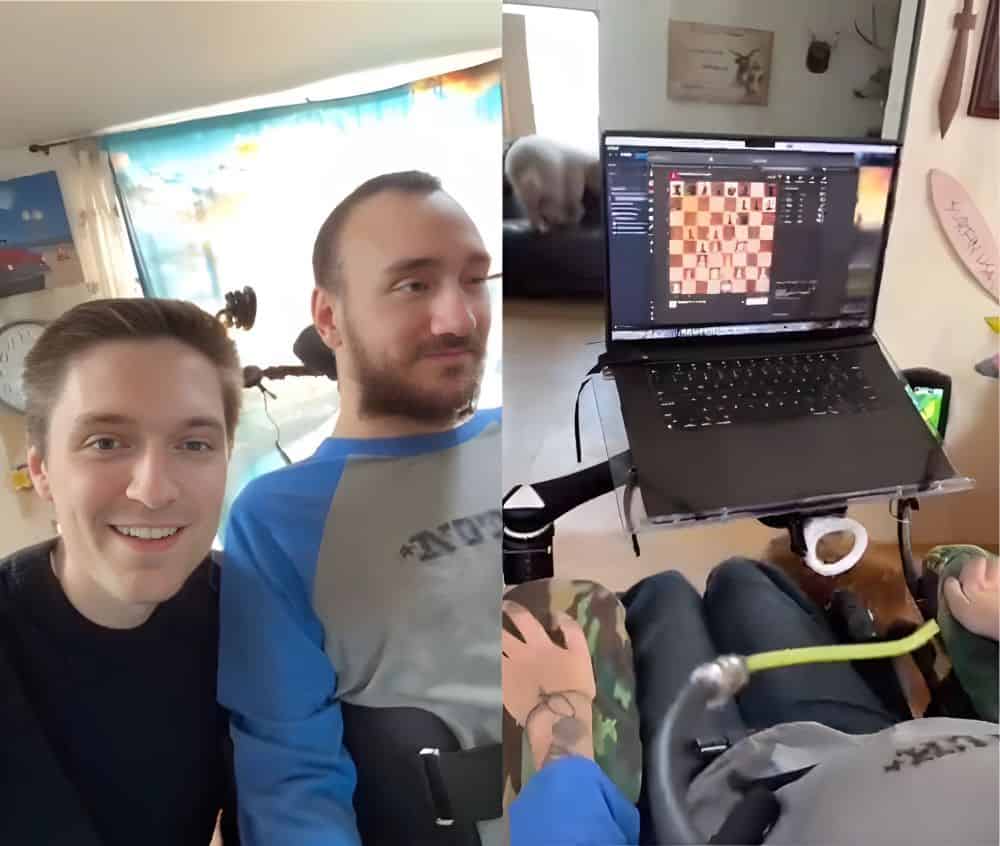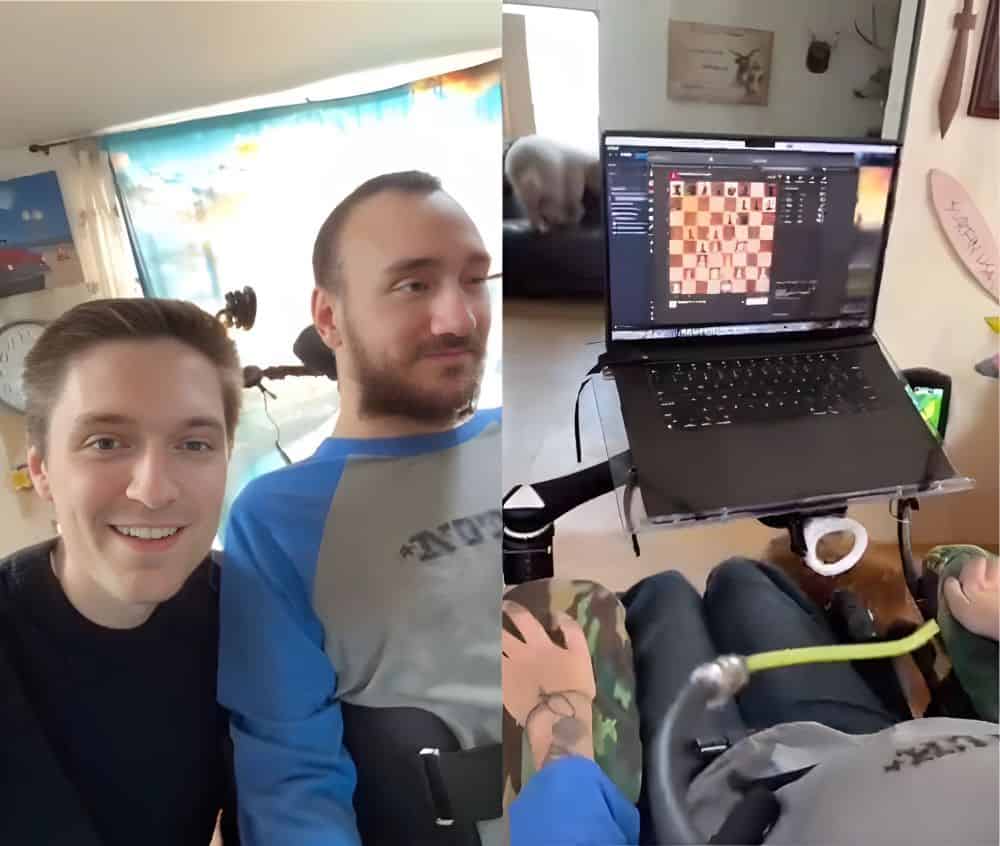
In September 2023, Neuralink, a company that connects the brain to computers and was co-founded by Elon Musk, asked for people to participate in clinical trials for their technology. Noland Arbaugh, a 29-year-old who became completely paralyzed after a diving accident, took the opportunity. Although the surgery would involve putting a device in his brain, Arbaugh felt like he had nothing to lose. Fortunately, this has turned out to be a remarkable success story.
A new method of playing
Arbaugh's quality of life has greatly improved. Even though he still can't feel anything below his shoulders, the Neuralink implant lets him control a computer with exceptional accuracy just by thinking. Arbaugh can message friends, browse the web, and even play chess independently. He even stayed up all night and into the morning playing one of his favorite video games, the turn-based strategy game Civilization VI.
On March 20th, Neuralink scientist Bliss Chapman posted a nine-minute live stream with Arbaugh. The two talked about the patient’s recovery process while Arbaugh was playing online chess using a digital cursor controlled by thought alone. “I think you’re my only telekinetic friend that I have,” Chapman jokingly said.
“I love playing chess and this is one of the things that y’all have enabled me to do. . . I had to use a mouth stick and stuff all these years, but now it’s all being done with my brain . . . It’s all brain power,” said Arbaugh while he turned off the music playing on the computer using the Neuralink interface.
After only a few months of practice with Neuralink, Arbaugh is remarkably proficient. He can move and click his cursor very responsively with just as much ease as if he were using his hand and fingers. This freedom has allowed him to play the game Sid Meier’s Civilization 6 as long as he wants — something that he couldn’t do on his own before. Previously, he would give a friend instructions on which plays to make on his behalf. He also likes to play Mario Kart 8 Deluxe, a fast-paced racing game where you need to react fast.
“I had basically given up on playing that game,” Arbaugh said, referring to the game Civilization VI, “you all (Neuralink) gave me the ability to do that again and I played for [around] 8 hours that day.”
How does Neuralink function?
Neuralink's technology aims to connect the human brain with computers. The process involves a surgical procedure where a group of extremely thin electrode-carrying threads, each finer than a human hair, are inserted into important areas of the brain. These threads record neural activity.
Inserting these threads demands extreme precision beyond even that of a surgeon’s hands. Therefore, Neuralink created a robotic arm specifically for this task. This robotic arm delicately places the threads into target areas of the brain, minimizing the risk of damage and maximizing the potential for accurate neuron interaction.
Once the threads are in place, they carry electrical signals they receive from neurons to a processing unit called the Link. The Link is a small, implantable device that sits outside the brain but within the skull. It analyzes and decodes these signals, translating neural activity into commands that computers can understand. This translation is the key to Neuralink’s functionality, allowing for potential control over computers or other devices just by thinking.
“We initially tried various things. We started with differentiating imagined movements from attempted movements. At first, I tried to move my right hand in different directions. After that, it became natural for me to just picture the cursor moving,” described Arbaugh.
“It was like using the force on the cursor! It moved where I wanted it to, which was an amazing experience. It’s unbelievable, it really is. It’s so cool!”
In addition to video games, Neuralink has helped Arbaugh regain independence in other aspects of life. He’s learning French and Japanese online. There are no known cognitive impairments or side effects as a result of his implant.
A New Era for Assistive Technologies
In a post on X, Elon Musk mentioned that this is just the start. His next objective is to have Neuralink “shunt” neural signals from the motor cortex, responsible for directing the body’s movements, to the disabled body part. By bypassing the damaged spinal cord, paralyzed patients could regain their lost mobility. He also mentions that a system called “Blindsight” is already restoring sight to monkeys using cameras instead of eyes.
Musk aims even higher with this project. The ultimate goal, according to him, is to transcend medical applications and move on to more futuristic possibilities, such as seamless integration of human consciousness with artificial intelligence or improving cognitive abilities.
However, these ambitious goals and claims should be viewed with caution. Speaking to Reuters, Kip Ludwig, former program director for neural engineering at the U.S. National Institutes of Health, said Neuralink’s demonstration is not a “breakthrough”. Indeed, we’ve reported on brain-computer interfaces on ZME Science for many years, from paralyzed patients who can use their thoughts to type on their iPhones, fire weapons, or even exchange information ‘telepathically’.
“It is still in the very early days post-implantation, and there is a lot of learning on both the Neuralink side and the subject’s side to maximize the amount of information for control that can be achieved,” Ludwig added.
Despite the promising results of Neuralink’s first human trial, the company has faced criticism over its treatment of animals in pre-human trials and other ethical concerns. Reports have pointed out the deaths of over 1,500 animals — sheep, pigs, and monkeys — in Neuralink’s experiments, raising questions about the haste in surgical procedures and the ethical implications of such advancements.
However, for now, it seems the system promises to give others like Arbaugh a chance to move their cursor and enjoy their computers again.
Did this help you?
Related Articles
- COP discussions address the problem of major polluters – individuals disguised as good contributors
- Reasons why architects should not skip their lessons in physics – The newest building in London causes cars to melt
- NASA creates Planetary Defense Office to safeguard the Earth from asteroids
- The Earth's core may be reversing its spin









